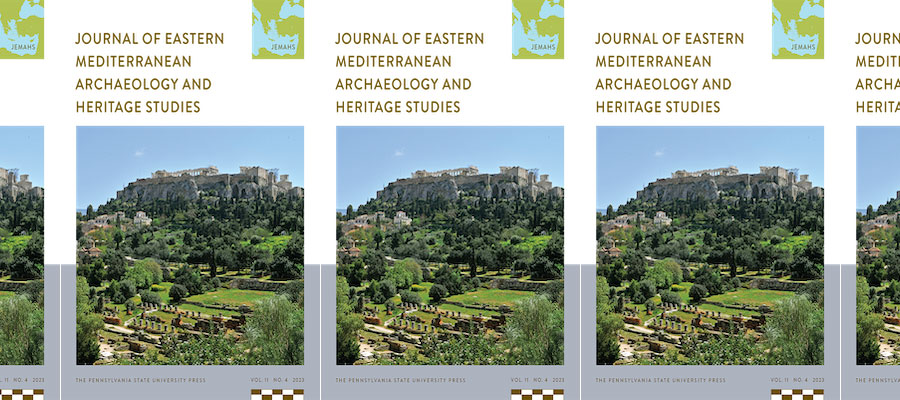Journal of Eastern Mediterranean Archaeology and Heritage Studies, volume 11, issue 4 (December 2023).
CONTENTS INCLUDE
The Mineralogical, Chemical, and Physical Properties of Ceramic Building Material: Khirbet Edh-Dharih in Southern Jordan (First Century BC–Seventh Century AD)
Ahmed H. B. Al-Shorman, Zeidoun H. Al-Muheisen, Raghad M. Khalayleh, and Jihad A. Al-Daire
Throughout history, ceramic building material (CBM), such as bricks, tiles, and hypocaust tiles, along with decorative elements, have been of immense significance. To determine the mineralogical content, chemical composition, and physical property of such materials, as well as pottery sherds, excavated from the archaeological site of Khirbet Edh-Dharih in southern Jordan, a range of analytical techniques that include petrography, XRD, AAS, and SEM-EDX were utilized. The findings indicate that during the periods studied the potters followed the tradition of sourcing local raw materials and utilized relatively advanced manufacturing techniques. However, the late Byzantine–early Umayyad potters deviated from this norm by blending noncalcareous clay with coarsely crushed quartz in higher proportions and firing them at elevated temperatures. This resulted in a clay with a lower water absorption capacity, lower porosity, and higher bulk density, thus improving its durability.
“Princeton’s Gift to Turkey”: Exploring the Political Matrix of the Orpheus Mosaic from Jerusalem and Late Ottoman Sardis
Christina Luke and Semih Çelik
Whereas it has often been argued that conflict and Western imperial ambitions and ensuing Ottoman defensive policies guided the direction of late nineteenth- and early twentieth-century archaeology in Anatolia and the Middle East, here we offer a perspective of high-profile American-Ottoman mutual partage diplomacy. This view stems from the relationship between Princeton University and the Imperial Museum in Constantinople. From a multiscalar approach that includes microlocal and macroimperial histories, we demonstrate how this American alliance trumped Ottoman citizenship and transcended physical and political jurisdictions. “Princeton’s Gift to Turkey”—the excavation, transfer, and installment of the Orpheus mosaic from the northwest corner of the Damascus Gate in Jerusalem to the Imperial Museum—triggered a lasting relationship between Osman Hamdi Bey and Howard Crosby Butler. Underwritten by financial means and technological capacity, this alliance foreshadowed the transformative period at Late Ottoman Sardis.
The Materiality of the Religious Soundscape: Bells and Bell Casting in Lebanon
Alex Rodriguez Suarez
This article looks at bells and bell casting in Lebanon from the eighteenth to the twentieth century. The topic, which has not received much scholarly attention, sheds light on a fascinating aspect of the material culture of the Christian communities in Lebanon. Through a combination of written sources and artifacts the article traces the history of bells and their production in the territory of the Republic of Lebanon. The core of the study is a catalog of ten bells, found in churches and monasteries across Lebanon, which were examined in 2020. Because of their location—usually on top of bell towers/gables—these musical instruments cannot be surveyed easily. Their analysis is a remarkable opportunity to visualize the materiality of bell ringing and its evolution throughout a period of about 200 years.
